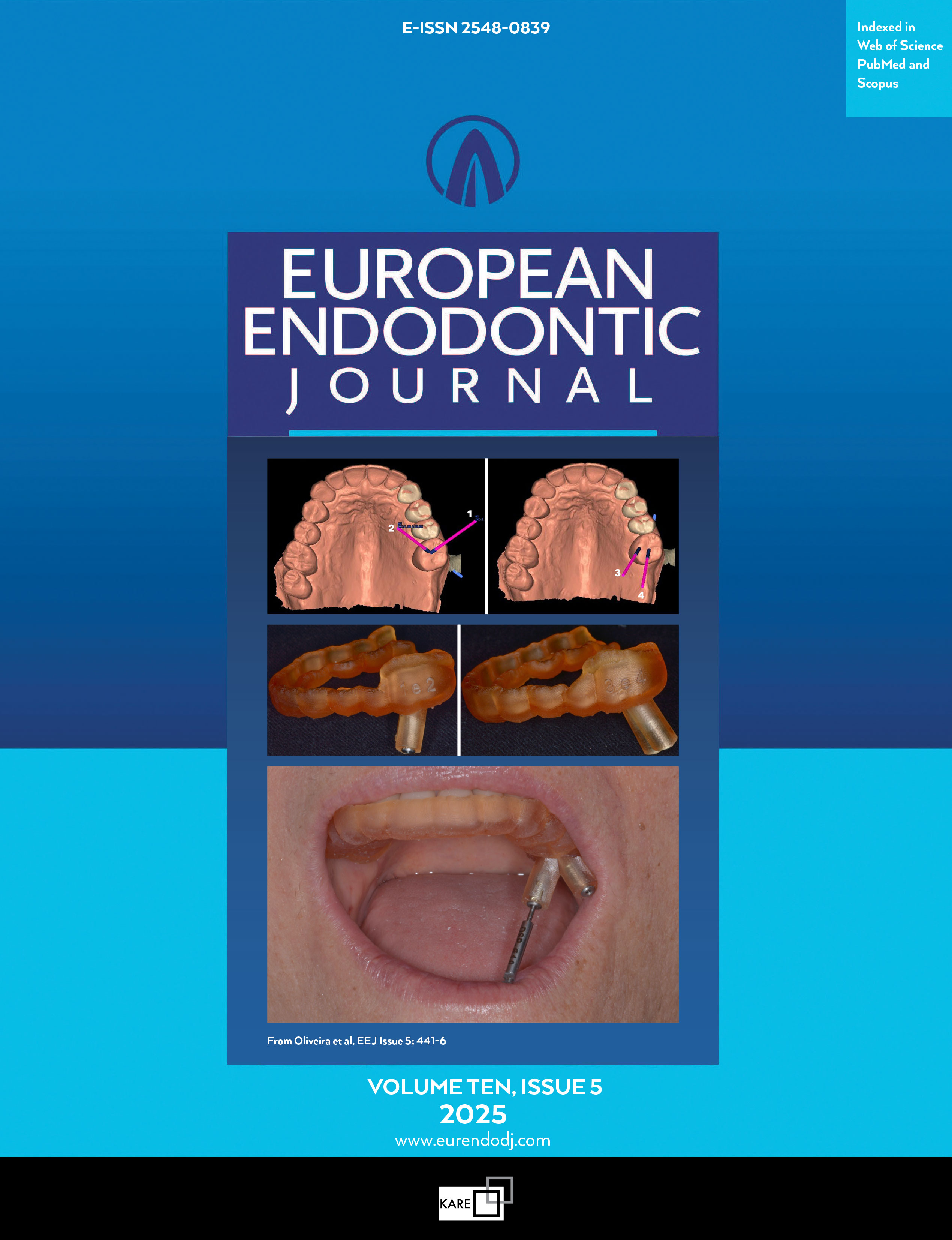Metrics
2024 IMPACT FACTOR
5 year Impact Factor
Eigenfactor Score
2024 CiteScore
Journal Citation Reports
(Clarivate 2025, JIF Rank)
Effect of Ultrasonic Activation on Dentinal Tubule Penetration of Bio-C Temp and Ultracal XS: A Comparative CLSM Assessment
Fernando Peña-Bengoa1, Maria Consuelo Magasich2, Delia Bustamante2, Catalina Wastavino2, Sven Eric Niklander3, Carolina Cáceres11Department of Endodontics, Universidad Andres Bello Faculty of Dentistry, Viña del Mar, Chile2Private Practice, Viña del Mar, Chile
3Department of Oral Pathology and Medicine, Universidad Andres Bello Faculty of Dentistry, Viña del Mar, Chile
Objective: The aim of this study was to compare the effect of ultrasonic activation (UA) on tubular penetration between Bio-C Temp and Ultracal XS intracanal medicaments.
Methods: Forty single-rooted human premolars were endodontically prepared and divided into 4 experimental groups (n=10): Bio-C Temp, Bio-C Temp+UA, UltraCal XS and UltraCal XS+UA. All medicaments were previously mixed with a specific calcium marker (Fluo-3) and passively injected into the canals. The samples were incubated for 7 days. For each tooth, 1 mm thick sections were obtained from the middle and apical thirds of the canals. The samples were examined by confocal laser scanning microscopy (CLSM) and the depth and area of penetration were determined for each group. The Student t test was used to compare results between groups (p<0.05).
Results: UA increased the depth and penetration area of Bio-C Temp and Ultracal XS, showing significant differences
in the penetration area of the apical third for Bio-C Temp (p<0.0339). Bio-C Temp presented greater tubular penetration than Ultracal XS, showing significant differences in the depth of penetration in the apical third (p<0.0005), and in the penetration area in the middle (p<0.0016) and apical third (p<0.0339) after UA.
Conclusion: UA increases tubular penetration (both depth and area) of Bio-C Temp at the apical third but has no significant effect on Ultracal XS. Bio-C Temp has a greater depth and tubular penetration area than Ultracal XS after UA. (EEJ-2023-02-024)
Manuscript Language: English
(1386 downloaded)


